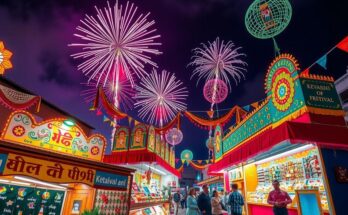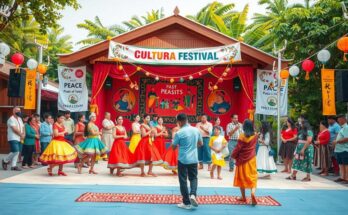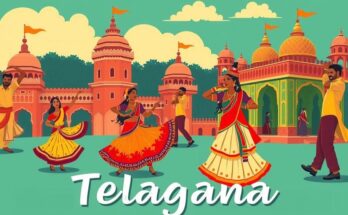In anticipation of Expo 2025 in Osaka, Japan, the Philippines has revealed its pavilion design titled “Woven,” crafted by the Carlo Calma Consultancy. This pavilion encapsulates the essence of Filipino connections with nature, cultural heritage, and community values. The overarching theme of “Nature, Culture & Community: Woven Together for a Better Future” is designed to showcase the nation’s creativity, diversity, and commitment to sustainable development while inviting engagement from visitors.
Inspired by the intricate art of Filipino weaving, the pavilion’s architecture embodies the concepts of interconnection and resilience. With a design reflecting “warp and weft,” the structure symbolizes harmony, strength, and progression. Over 200 woven rattan and textile panels created by local artisans from various Philippine communities form the pavilion’s façade, representing adaptability and craftsmanship. These natural materials sway gently, breathing life into the installation.
The pavilion emphasizes the theme of “Nature, Culture & Community” through its engaging design and informative exhibits. By integrating natural materials and interactive displays, it aims to raise awareness of the Philippines’ rich biodiversity and address environmental concerns. Cultural exhibits will shine a spotlight on Filipino creativity, displaying sustainable products made from natural resources, waste materials, and innovative technologies.
Celebrating collaboration with various weaving communities, the design reflects the interconnected nature of Filipino society. Inside the pavilion, visitors are immersed in cultural performances, traditional dances, and storytelling, offering a deep dive into the Philippines’ rich traditions and artistic expressions. All these elements help paint a vivid picture of Filipino life.
Sustainability is a focal point of the pavilion, which employs renewable and reusable materials to lessen environmental impact. After the conclusion of the Expo, modular elements will be moved to the National Museum of the Philippines, ensuring the pavilion’s cultural and educational legacy continues and aligns with national sustainability efforts. This initiative is a testament to the Philippines’ response to global ecological challenges.
As nations prepare for Expo 2025, they also reveal their own pavilion themes—like the UK’s focus on artificial intelligence, Switzerland’s homage to nature and innovation, and the Netherlands’ vision of clean energy in a circular economy. Each pavilion serves as a reflection of its country’s values and priorities, contributing to a vibrant tapestry at the Expo.
The Philippines’ pavilion for Expo 2025, designed by Carlo Calma Consultancy and titled “Woven,” focuses on themes of nature, culture, and community. It features over 200 woven panels made by local artisans and emphasizes sustainability and biodiversity. Exhibit spaces will showcase Filipino creativity and craftsmanship while promoting environmental consciousness. After the Expo, parts of the pavilion will be moved to the National Museum of the Philippines for continued cultural engagement.
The Philippine Pavilion for Expo 2025, themed “Woven,” is a vibrant representation of interconnection between nature, culture, and community. Crafted with sustainable materials and showcasing Filipino heritage, it aims to engage visitors with its rich biodiversity and cultural expressions. This innovative design reflects the Philippines’ commitment to sustainability, showcasing the resilience and creativity of its people while leaving a lasting educational legacy beyond the expo.
The Philippines will participate in Expo 2025, a world fair scheduled to take place in Osaka, Japan, focusing on themes of sustainability, culture, and community. Each participating country is tasked with showcasing its unique contributions and innovations, driving global dialogue on pressing issues. The concerted effort reflects an interest in promoting interconnectedness and addressing environmental challenges through creative and innovative designs. The Philippine Pavilion’s design development involved local artisans, emphasizing traditional craftsmanship within a contemporary framework.
Original Source: www.archdaily.com



